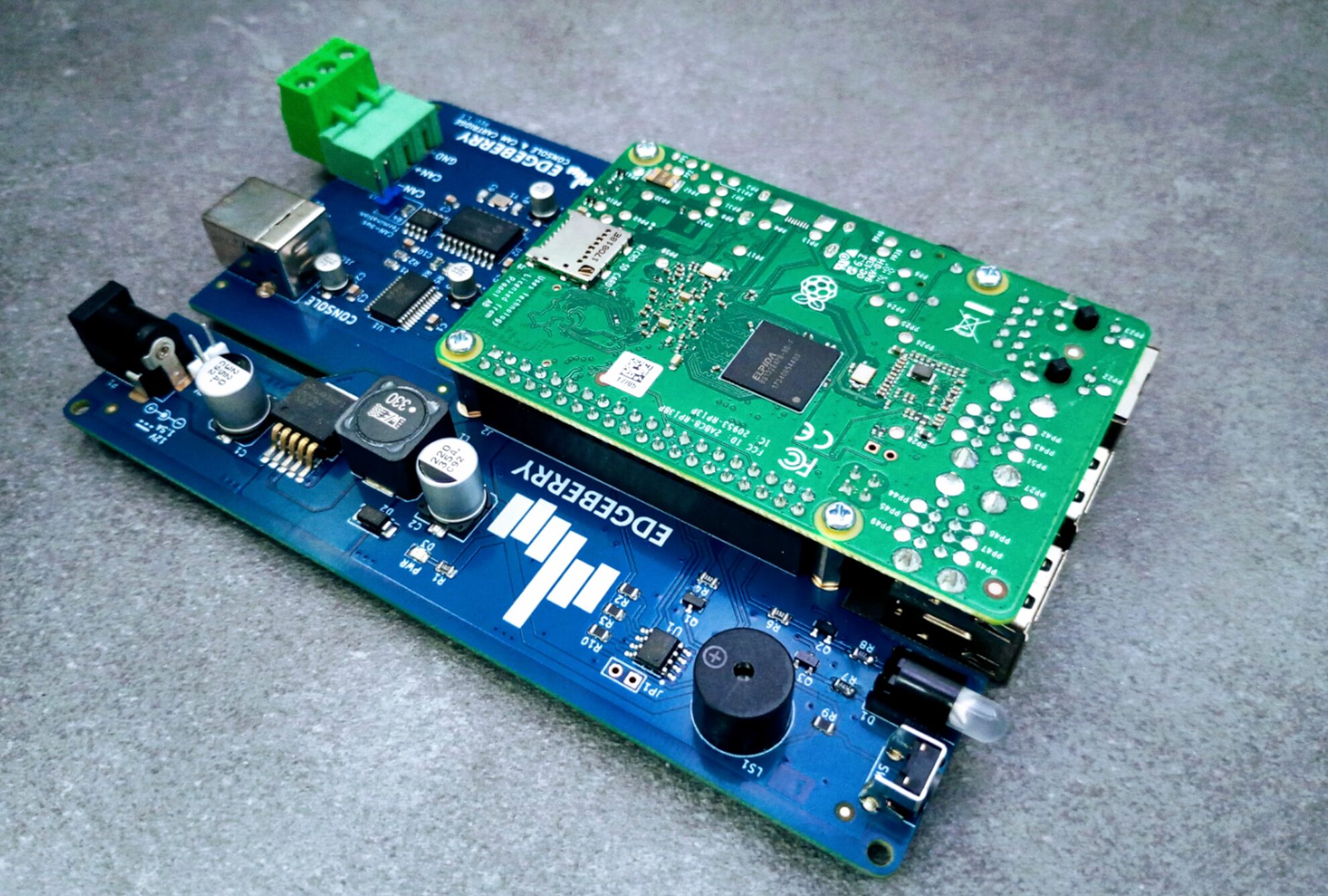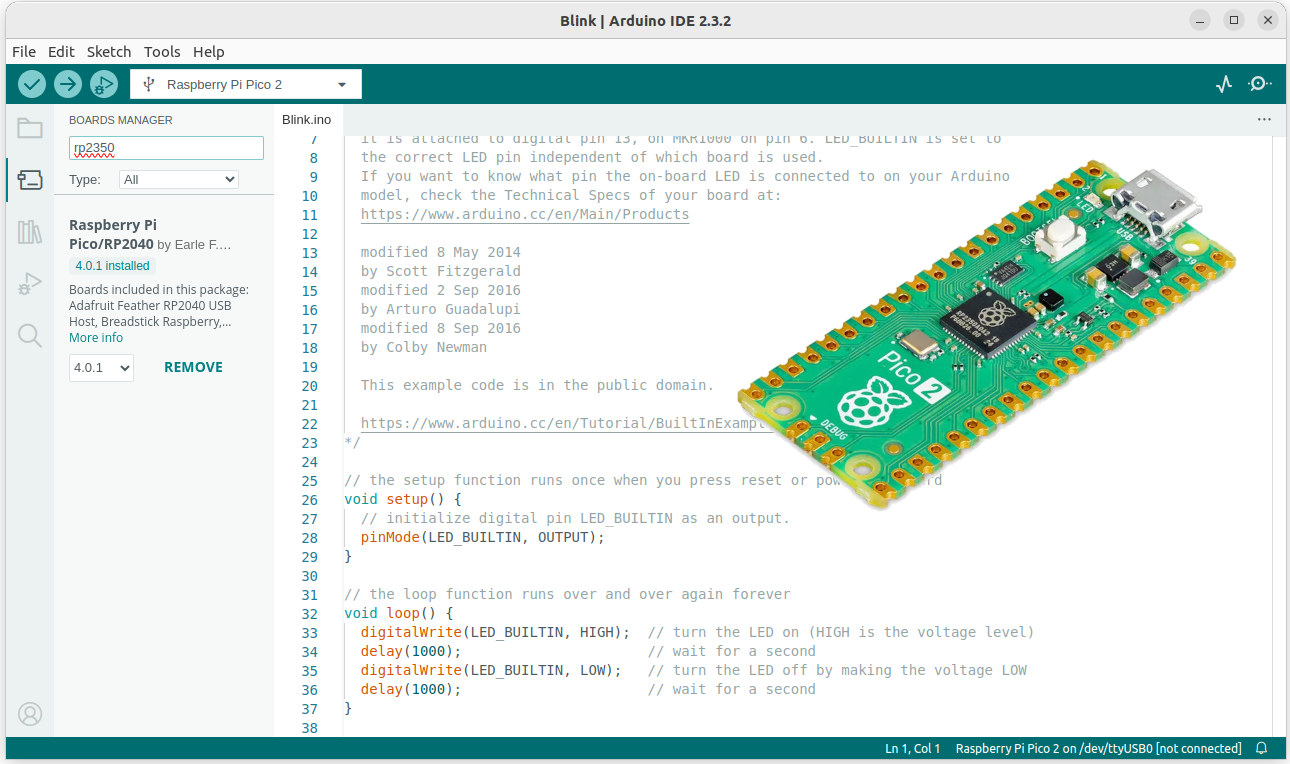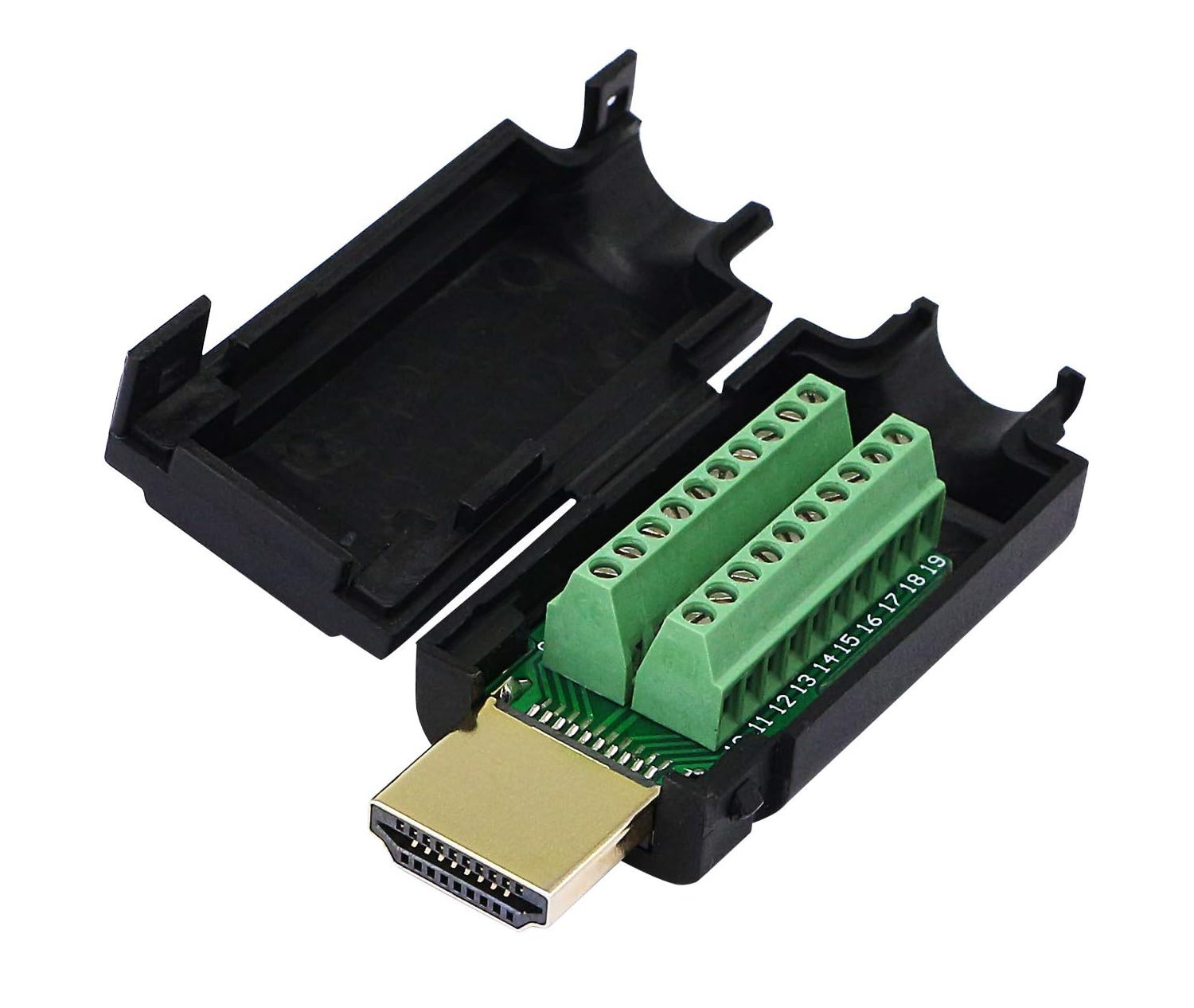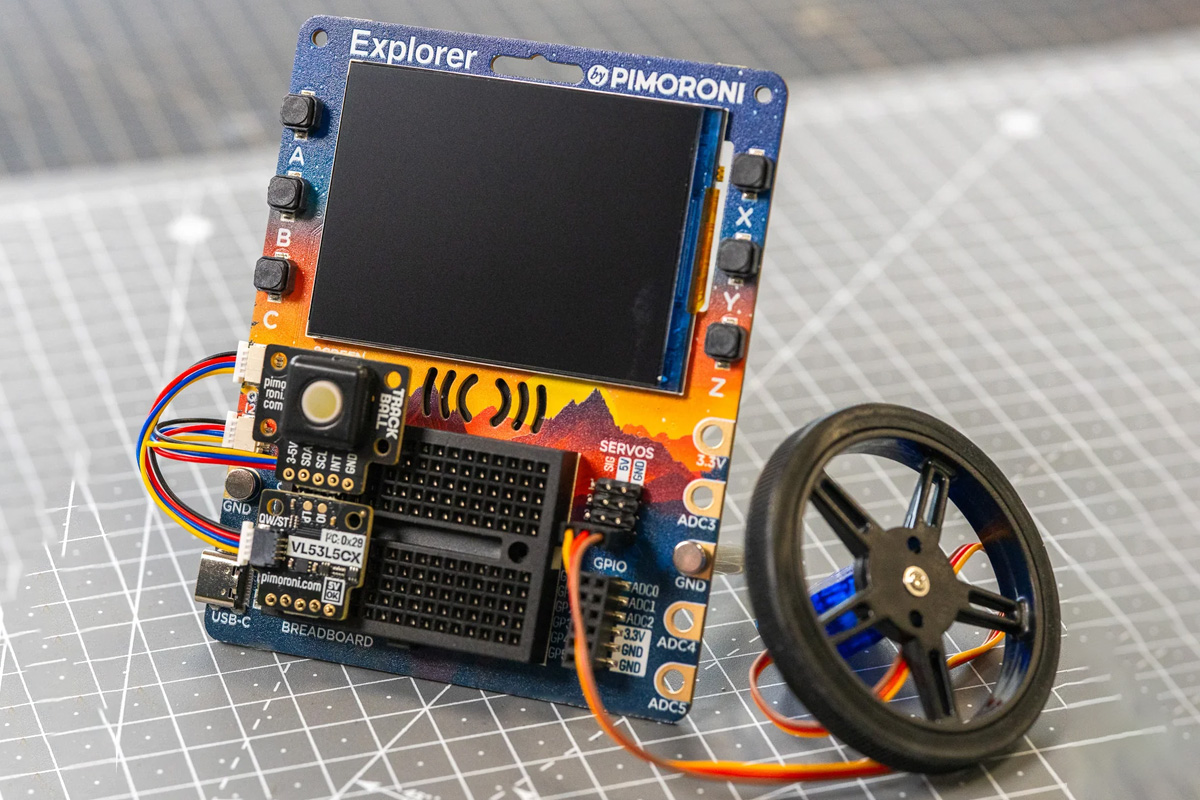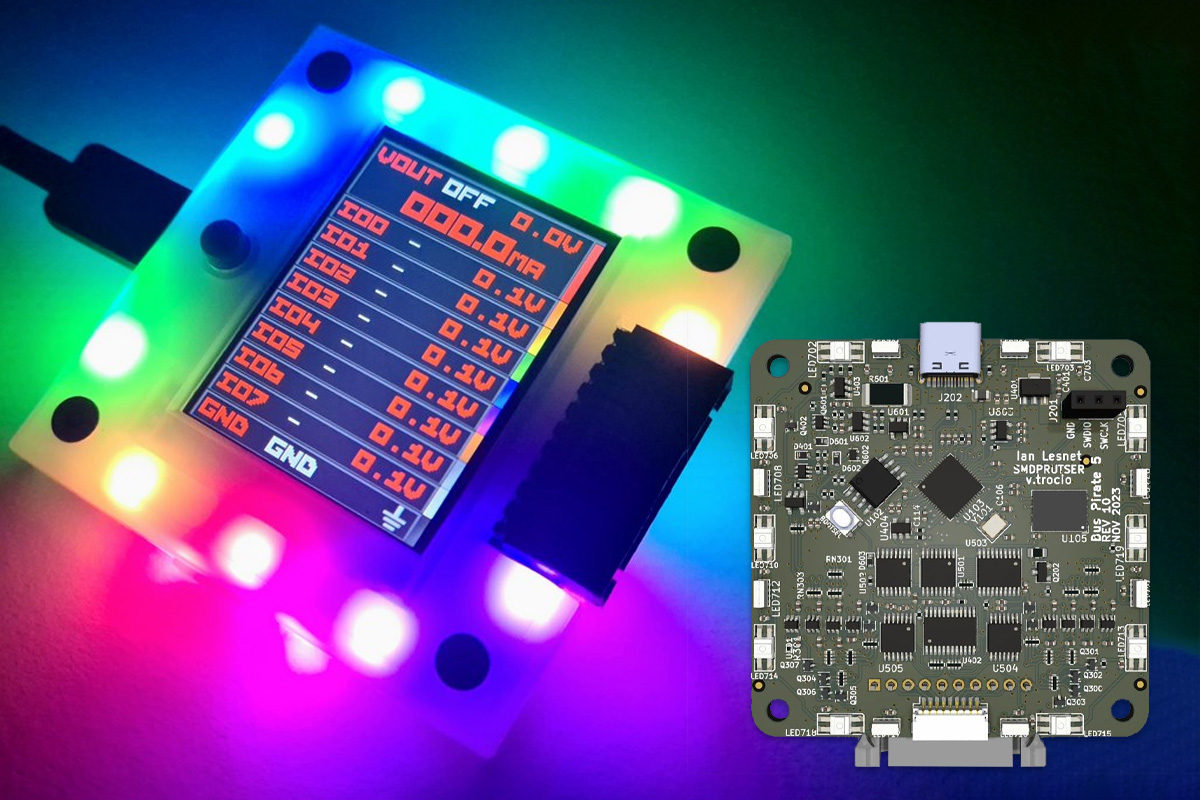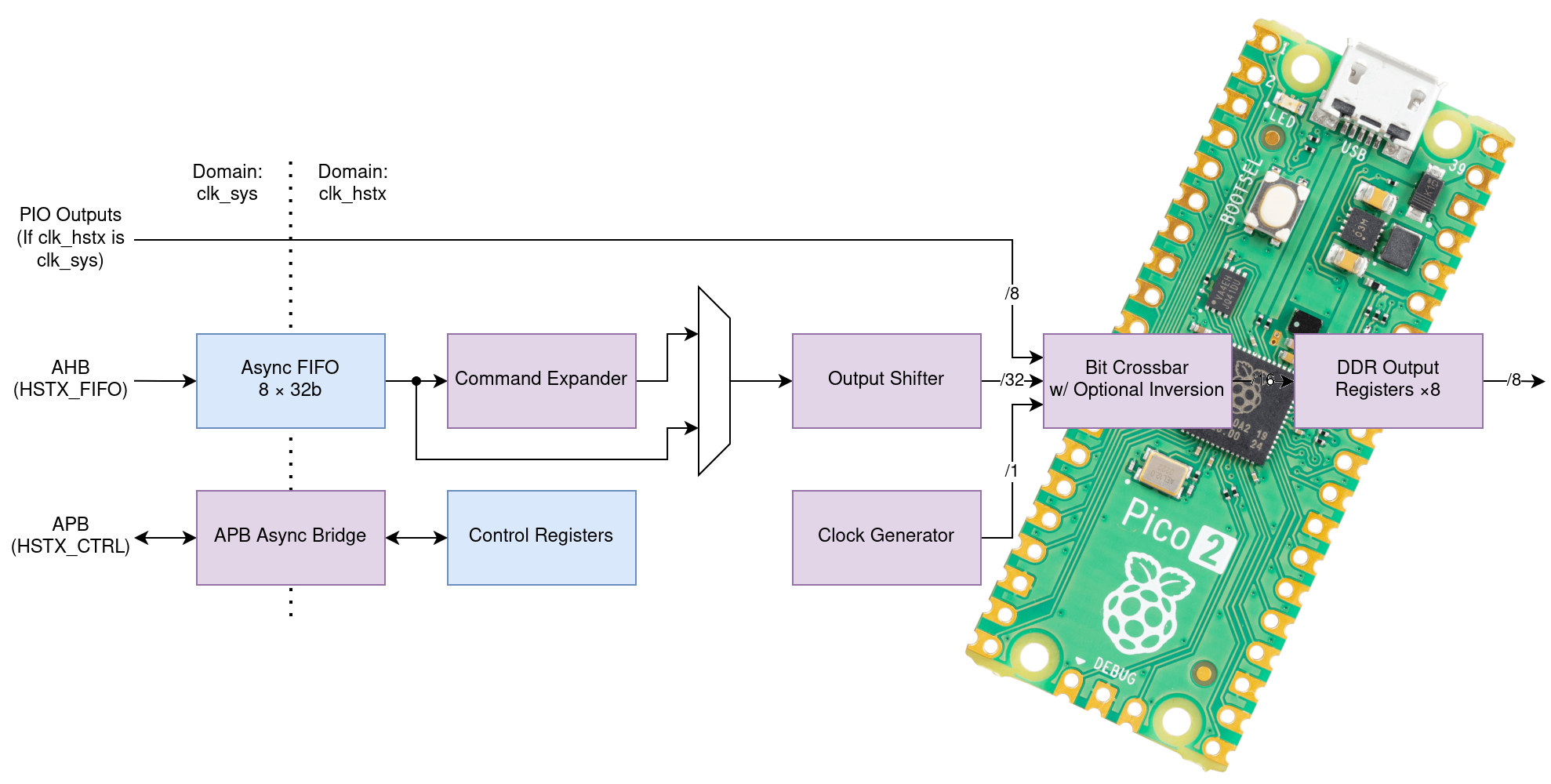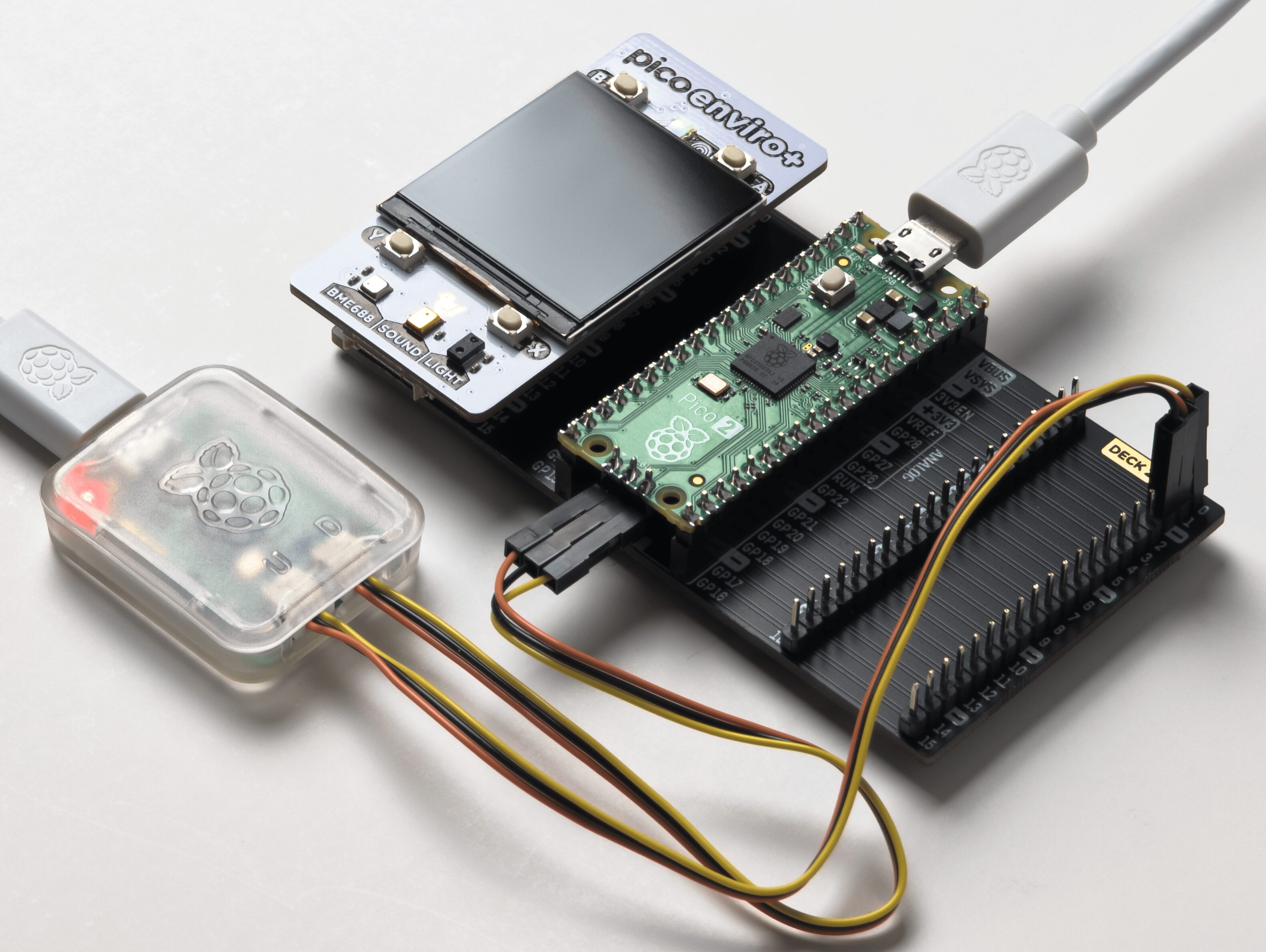The EdgeBerry is an open-source platform that comprises a base board, hardware cartridges, and software for building Raspberry Pi IoT Edge solutions designed by Belgium-based maker, Sanne Santens. The Edgeberry Base Board is the primary printed circuit board that connects all the other components to the Raspberry Pi. While it is not a HAT (Hardware Attached on Top), it plugs into the GPIO header on the Pi and provides certain interfaces and features that make it easier to use your Raspberry Pi as an IoT Edge device and deploy it in the real world. Unused GPIO pins are exposed on the expansion slot for Edgeberry Hardware Cartridges. Edgeberry Base Board specifications: 40-pin GPIO connector for interfacing with the Raspberry Pi Expansion slot for connecting Edgeberry Hardware Cartridges Misc – Buzzer, Bi-color LED, Button 3A step-down converter 12V DC power jack A unique advantage of the Edgeberry platform is the ability […]
Raspberry Pi Pico Arduino core 4.0 adds support for RP2350 boards
Earle F. Philhower, III has just released the Raspberry Pi Pico Arduino core 4.0 with support for a range of Raspberry Pi RP2350 boards beside the official Raspberry Pi Pico 2. Shortly after the RP2040-based Raspberry Pi Pico board was released, we got two Arduino SDKs, the first being the community-supported Raspberry Pi Pico Arduino core maintained by Earle, and the second being the official Arduino Core Mbed 2.0 for boards as such as Arduino Nano Connect RP2040. We are again likely to have two Arduino SDKs for the RP2350 starting with the Raspberry Pi Pico Arduino core. Key changes in Raspberry Pi Pico Arduino core 4.0: Adds Raspberry Pi RP2350 support (Arm only; RISC-V cores are not supported at this stage) Migrates to Pico SDK 2.0 since it is required for RP2350 support and includes a new OpenOCD and Picotool. Tested features: SPI, I2C, LittleFS, EEPROM, PWMAudio, LWIP-based networking, […]
HDMI to screw terminal adapters could be useful for Raspberry Pi RP2040 and RP2350 boards
The very idea of an HDMI to screw terminal adapters maybe seem moronic at first, but in an era of programmable IOs (PIO), and high-speed serial transmit (HSTX), those could end up being useful for boards or modules based on Raspberry Pi RP2040 or RP2350 since they’ve all be shown to support DVI output through HDMI connectors. There are a few boards that integrate an HDMI port such as the Olimex RP2040-PICO-PC, Solder Party RP2xxx Stamp Carrier XL, or Adafruit Feather RP2040 among others, but most boards don’t include an HDMI port. What they do typically have are GPIO headers, and an HDMI to screw terminal adapter would allow users to easily add an HDMI port to their existing board without soldering simply by using jumper wires, or with a bit more work an old HDMI cable. All HDMI to screw terminal adapters are pretty basic with an HDMI male […]
ANAVI Dev Mic is a digital omnidirectional microphone based on Raspberry Pi RP2040 MCU (Crowdfunding)
The ANAVI Dev Mic is an open-source microphone board from ANAVI Technology in Plovdiv, Bulgaria powered by the Seeed Studio XIAO RP2040 module and an omnidirectional digital microphone from STMicroelectronics. It is a compact and affordable product that outperforms USB microphones in artificial intelligence and machine learning voice applications. The design is simple and unassuming, with the Seeed Studio XIAO RP2040 module in the center, surrounded by a USB-C port for power and programming and 9 GPIO pins for extensibility. The STMicroelectronics MP23DB01HP microphone (MK1) is mounted on the top of the board with a small hole on the bottom. It is a compact, low-power, digital MEMS microphone capable of capturing sounds from different directions with very low distortion. It uses a PDM (Pulse-Density Modulation) interface created via the programmable inputs/outputs (PIO) on the RP2040. The ANAVI Dev Mic is applicable for conducting AI/ML research, building a voice recognition platform, […]
Pimoroni Explorer board is a Raspberry Pi RP2350-based learning platform with 2.8-inch LCD, breadboard sensors and more
The Pimoroni Explorer board is an electronic prototyping board built around the Raspberry Pi RP2350 chip with a 2.8-inch LCD screen, a speaker connector, and various I/Os, which makes it easy to build circuits, prototype projects, and even make small robots. It also features a mini breadboard, tactile buttons, and crocodile clip terminals, making it suitable for both beginners and experienced makers. The RP2350 MCU was recently released by Raspberry Pi Limited along with the $5 Raspberry Pi Pico 2 board. Since that initial release, we have seen many RP2350-based development boards like the Cytron MOTION 2350 Pro, the Bus Pirate 5XL and 6, and many other development boards released, feel free to check those out if you are looking for development boards built around the RP2350 MCU. Pimoroni Explorer board specifications Microcontroller – Raspberry Pi RP2350B MCU CPU Dual-core Arm Cortex-M33 @150MHz with Arm Trustzone for secure boot Dual-core 32-bit […]
Bus Pirate 5XL and 6 hardware debugging tools utilize Raspberry Pi RP2350A and RP2350B microcontrollers
The Bus Pirate 5XL and 6 are open-source hardware debugging tools respectively based on Raspberry Pi RP2350A and RP2350B and designed to simplify interaction with various bus protocols like 1-Wire, I2C, SPI, UART, several LEDs, and more. The idea is to send commands to a chip or sensor and get the response, without writing a single line of code making it ideal for hardware hacking and tinkering. The devices feature buffered I/O pins with voltage and current measurement, a programmable power supply with current limiting, an RGB LCD for pin status and info, and an auxiliary header for connecting logic analyzers. All these features make this device useful for applications like debugging circuits, prototyping projects, and reverse engineering devices. The new devices are updates to the Bus Pirate 5 based on Raspberry Pi RP2040 MCU. You’ll find Bus Pirate specifications for the three models in the table below. The original […]
A closer look at Raspberry Pi RP2350’s HSTX high-speed serial transmit interface
The Raspberry Pi RP2350 microcontroller adds an HSTX (High-Speed Serial Transmit) interface adding the PIOs (Programmable IOs) introduced on the Raspberry Pi RP2040 three years ago. The RP2350 MCU now has three PIOs and one HSTX interface going over 8x GPIOs. So let’s try to better understand what HSTX is exactly, what it is used for, and how it differs from PIOs. We’ll also check out some programming examples in C and MicroPython. The high-speed serial transmit (HSTX) interface is detailed in the RP2350 datasheet starting on page 1118 where it reads “The high-speed serial transmit (HSTX) interface streams data from the system clock domain to up to 8 GPIOs at a rate independent of the system clock”. Reading further, we also learn that it runs at 150 MHz enabling up to 300 Mbps per pin with DDR output operation, or a combined 2,400 Mbps over 8 pins if I […]
Google Pigweed SDK now supports Raspberry Pi RP2350 microcontroller
Google Pigweed, a collection of open-source libraries for embedded software development, now supports the Raspberry Pi RP2350 MCU and comes as a software development kit (Google Pigweed SDK). These libraries, also called modules, are building blocks that make embedded software development faster and more reliable. It targets tiny 32-bit microcontrollers such as STMicro STM32L452, Nordic Semi nRF52832, and the Raspberry Pi Pico line of microcontrollers. The library components have shipped in Google Pixels, Nest thermostats, robots, satellites, and drones. On August 8, the Pigweed project was released as a software development kit (SDK) in developer preview with official support for Raspberry Pi RP2350 and the associated Pico 2 development board. The new release uses the Bazel build system – a feature upstreamed into the Pico SDK by the Google Pigweed team – and a complete, open-source Clang/LLVM toolchain. The Google Pigweed SDK includes sample code, modules, and a comprehensive tutorial […]


